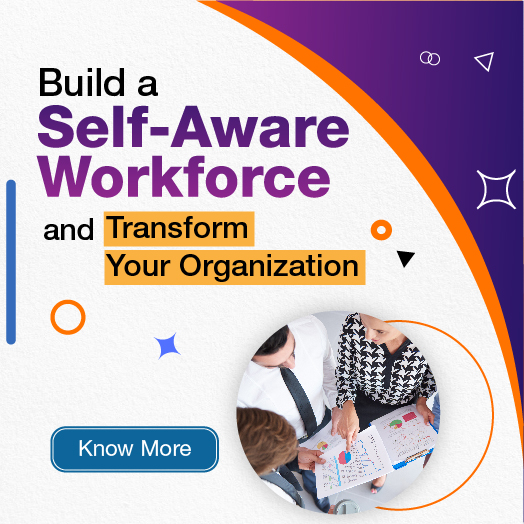
Power Dynamics at Work: Who Holds the Reins and Why It Matters
- Our Subject Matter Experts
- August 4, 2025

Power dynamics affect how people work together, make choices, and move up the ladder in every company—from fast-paced startups to well-structured corporations. These dynamics influence everything, from who speaks up in meetings to who gets promoted. While often silent, power dynamics in the workplace are powerful and ever-present.
But job titles and organizational charts don’t always reflect who truly holds influence. Often, personality types and power dynamics, emotional intelligence, communication styles, and social capital play a larger role. Understanding these forces isn’t optional anymore—it’s essential for professionals and leaders who aim to build respectful, high-performing teams.
Understanding the underlying power dynamics in the workplace can transform not only your role—but your team culture.
What Are Power Dynamics?
At its core, power dynamics refer to how people and groups exert control, authority, and influence over one another. These dynamics determine who has power, how they use it, and how others respond. Whether it’s between managers and employees, peers, or cross-functional teams, power dynamics in the workplace are a daily reality.
While organizational charts show formal structures, power dynamics in workplace relationships are often more informal and fluid. Someone without a senior title may still hold significant influence due to expertise, charisma, or strong relationships—proving that power dynamics in the workplace are often based on influence, not title. Conversely, someone in a leadership position may struggle to assert authority if they lack communication or emotional intelligence.
Understanding the types of power dynamics helps professionals identify who actually drives decisions, shapes communication, and receives recognition. Recognizing these patterns makes it easier to navigate complex office cultures.
Key questions to observe power dynamics:
- Who convinces whom in meetings?
- Who holds key resources or data?
- Who sets goals and makes final decisions?
Once you become aware of these patterns, you can learn to work with—or around—them. Add in personality types and power dynamics, and you get an even deeper layer of complexity around how people assert or resist power.
Types of Power Dynamics in the Workplace
Not all power looks the same. In fact, there are multiple types of power dynamics at play in any workplace, some overt and some subtle. Understanding them allows professionals to manage influence, navigate authority structures, and improve collaboration.
Here are the most common types of power dynamics in the workplace:
1. Legitimate Power
This stems from official roles or titles—like CEO, manager, or team lead. It’s one of the most visible types of power dynamics, though not always the most effective. Just holding a title doesn’t guarantee influence if communication and trust are missing.
2. Expert Power
Rooted in knowledge and skills, this form of power allows individuals to shape decisions and resolve problems—even without formal authority. It’s one of the most respected types of power dynamics in the workplace today.
3. Referent Power
Based on personality, trust, and likability, this dynamic influences others through respect rather than authority. It’s deeply tied to personality types and power dynamics, especially in informal settings.
4. Coercive Power
This arises from fear—typically through threats, punishments, or pressure. It’s one of the more damaging types of power dynamics, often leading to disengagement or toxic environments.
5. Reward Power
This type allows individuals to offer incentives like bonuses, recognition, or promotions. It may be formally assigned or informally exercised between peers—quietly shifting power dynamics in workplace relationships.
Understanding these layers is key to working within—and around—visible and invisible chains of influence.
How Power Dynamics Affect the Workplace
Power dynamics in the workplace influence communication, decisions, and culture. Whether healthy or toxic, these forces affect every level of operation and morale.
1. Communication Flow
In rigid power dynamics, lower-level employees may hesitate to speak up. This stifles creativity and reduces innovation. Healthy workplace power dynamics, on the other hand, create environments of open dialogue and mutual respect.
2. Decision-Making
When types of power dynamics favor certain individuals unfairly, decisions may reflect bias or self-interest. Balancing power dynamics improves input, encourages diversity, and leads to better results.
3. Motivation and Morale
Toxic power dynamics in the workplace often cause burnout and disengagement. Positive power structures—where authority is shared and contributions are valued—boost motivation and performance.
4. Conflict Resolution
Unbalanced power dynamics can escalate or silence conflict. Healthy power structures encourage fair, transparent resolution and shared responsibility.
Ultimately, understanding how power dynamics affect the workplace helps organizations foster fairness, creativity, and accountability.
Read more – Common Workplace Obstacles and 8 Tips to Overcome Them
Personality Types and Power Dynamics
Power isn’t just about titles—it’s also about temperament. The link between personality types and power dynamics plays a huge role in shaping influence, whether visible or subtle.
Common personality traits and their impact:
- Dominant individuals often shape goals, control narratives, and lead decisively—affecting multiple types of power dynamics regardless of job title.
- Empathetic individuals gain influence by building trust and emotional connections—an often underestimated but critical form of power dynamics in workplace culture.
- Adaptable personalities thrive in fluid situations, shifting roles and influence as needed—helping balance changing workplace power dynamics.
Understanding the intersection of personality types and power dynamics helps leaders assign roles thoughtfully and build stronger teams.
Power Dynamics: Turning Awareness into Action
Recognizing power dynamics in the workplace is only the first step. The next is learning to navigate them wisely and constructively.
Tips to navigate and shift power dynamics:
- Map the Power Structure
Identify both formal hierarchies and informal influencers. Who holds information? Who do people turn to for advice? - Develop Emotional Intelligence
Trust, empathy, and clarity go a long way in shifting negative types of power dynamics into productive ones. - Be Assertive, Not Aggressive
Quiet leadership can be powerful. Communicate clearly, model respect, and lead through action. - Empower Others
True influence comes from enabling others. Shared power improves morale and creates healthier workplace power dynamics. - Address Toxicity Strategically
Document issues, build support, and raise concerns thoughtfully. Correcting harmful types of power dynamics takes courage and care.
Real-World Examples of Power Dynamics at Work
1. The Invisible Influencer
Maria has no formal title, yet shapes decisions and guides peers. Her influence stems from trust and knowledge.
Takeaway: Trust-based referent and expert power dynamics can outweigh official roles.
2. The Micromanaging Manager
Daniel holds formal authority but undermines his team’s confidence with control.
Takeaway: Poor use of coercive power dynamics stifles innovation and morale.
3. The Office Gatekeeper
Julie manages operations and controls key resources without managerial status.
Takeaway: Access-based resource power dynamics can shape project outcomes significantly.
4. The Collaborative Leader
Priya leads with emotional intelligence, empowering others.
Takeaway: Healthy relational power dynamics build trust and drive results.
5. The Silent Spectator
Kevin witnesses unfair dynamics but stays silent.
Takeaway: Passive roles still influence social power dynamics. Speaking up matters.
Conclusion
Understanding power dynamics in the workplace isn’t just about knowing who’s in charge—it’s about recognizing how influence flows through communication, relationships, and personality. From formal authority to quiet influence, types of power dynamics shape how people collaborate, lead, and grow.
When people feel seen, heard, and respected, they contribute more. That’s why recognizing how power dynamics affect the workplace is vital for building inclusive, productive environments.
Leaders and employees who understand both power dynamics and personality types and power dynamics can better navigate workplace complexities, promote fairness, and create lasting impact.
In the end, power dynamics will always exist—but whether they divide or empower is up to us.
Read More – How DiSC Assessment Transforms Team Dynamics and Collaboration






